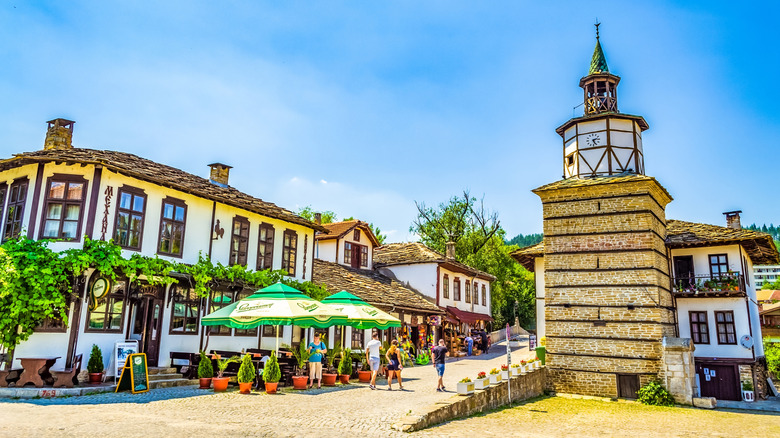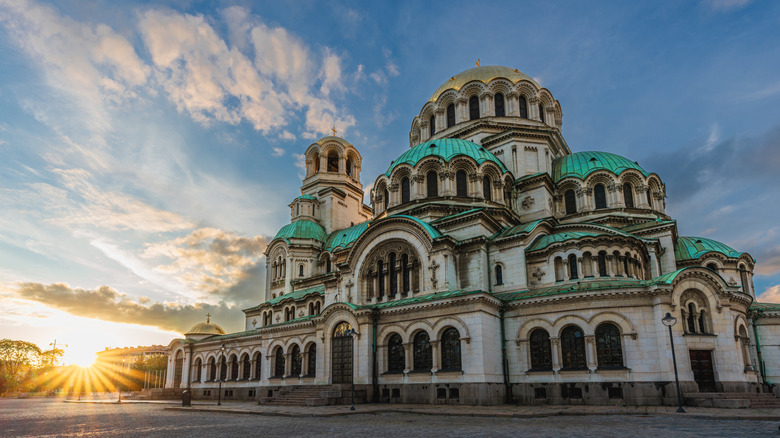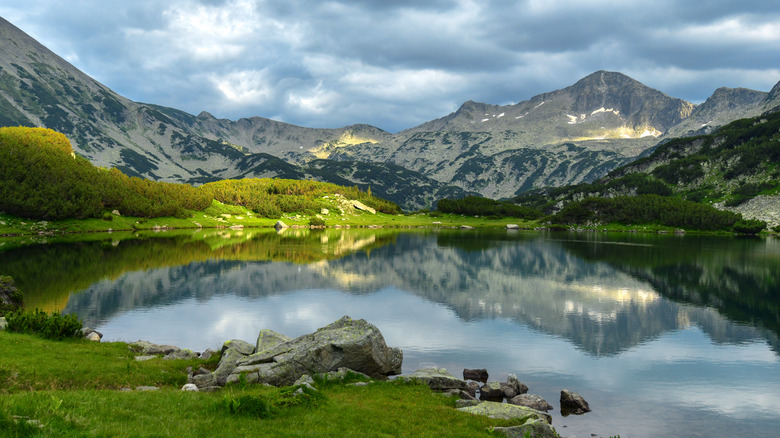Rick Steves Doesn't Understand Why Americans Totally Overlook This Charming, Affordable European Country
For many people, especially Americans locked by oceans on the east and west, getting over to Europe might be a once-or-twice-in-a-lifetime trip. Well-known, historically prominent countries like Spain, France, Greece, or Italy often sit at the top of people's wishlists. As a result, cities like Venice, Rome, and Barcelona are overflowing with people, becoming some of the most overtouristed places in Europe. But, as with the rest of life, it's the overlooked things that are often the best. This is why travel author Rick Steves recommends a lesser-known country flowing with history, beauty, and cultural charm: Bulgaria.
Steves' recommendation to visit Bulgaria hinges on its uniqueness, which is tied to its geography and history. Bulgaria's location tells its whole story. West of Turkey and once under Muslim Ottoman Empire control, adjacent to Greece at the intersection of East and West, and under the pall of Soviet influence through the 20th century, Bulgaria's past lives through its present. It was never officially a Soviet republic, joined the EU in 2007 following the collapse of the USSR in 1991, revalued and retained its own currency, the lev (not the euro), and now lives within multiple worlds. As Steves writes on his website, "The dreams and the aspirations [of Bulgaria] are facing West — a reason to encourage us to travel East."
It's true that Bulgaria has a lot to offer besides an idiosyncratic history, and its affordability allows travelers to get by on around $45 per day. Its capital, Sofia, is full of artistic coolness and shopping, monasteries and museums, and historical centerpieces like St. Alexander Nevsky Cathedral. Bulgaria's countryside, meanwhile, is a truly gorgeous expanse of rolling, green hillsides dotted with rustic villages.
Explore Bulgaria's cityscapes and witness its unique history
Ultimately, Rick Steves' take on Bulgaria mirrors his take on other lesser-known (yet incredibly charming) European countries like Slovenia and its capital, Ljubljana. But while Steves doesn't rank Bulgaria as high as Slovenia, which he puts at the top of such overlooked European country lists, he calls Bulgaria a "strangely charming land" that is "no less compelling" than his earlier visits when a meal cost $3 (per his website). And while meals in Bulgaria might not be as cheap as $3 anymore, they certainly aren't at the high end of expensive.
Bulgaria's capital, Sofia, sits at the top of the country's urban list. All of the nation's unique history and culture are on display in Sofia, packed into a city center that only takes about 30 minutes to cross on foot (but you'll want much more time to take in the sights). There's the small, round, red-bricked Church of St. George that has stood its ground for over 1,600 years. There's Independence Square, which has stark Soviet architecture beside neo-classical buildings. There are the green-topped domes of the largest Eastern Orthodox cathedral in the Balkans, St. Alexander Nevsky Cathedral (pictured above). And lest you think that architecture is all Sofia has to offer, there's the restaurant and shopping on Vitosha Boulevard, the city's oldest marketplace — the Women's Market, and Sofia's entire art district.
Bulgaria's urban offerings don't wane outside of Sofia, either. Visitors can stroll through the medieval, cobblestone streets of Veliko Tarnovo, stroll along the Black Sea peninsula and UNESCO Heritage Site, Nessebar, or visit the stony, snow-capped peaks of mountainous, ski-friendly Bansko in winter.
Explore Bulgaria's countryside and participate in its rich, rural life
If Bulgaria's culturally dense cities don't attract prospective visitors, its countryside will. Rural Bulgaria is a panorama of distinct regions full of gently sloping hillsides, farms and taverns, villages connected by ancient roads, canoeing in mountainside lakes, hiking and biking, and some of the same historical richness you'll find in cities. The mountainous Strandzha region, for instance, contains Bulgaria's biggest nature preserve and is steeped in mystical traditions and full of old churches and homes. The sheep-filled grasslands around the Rila and Pirin mountains lead towards hidden, high-elevation villages and rock formations. Bulgaria's hiking trails might not be as dramatic as Georgia's Transcaucasian Way, one of the world's longest continuous trails, but they are distinctly Bulgarian.
Most critically, visitors don't have to merely walk through village life and observe it like a museum. Bulgaria is full of homestays where you can participate directly in folk life and become a part of a local family for a time. You can head into the forest and gather mushrooms and herbs, milk cows, eat vegetables plucked from a host's garden, cut hay, prepare cheese or yogurt, and even distill wine or rakia — Bulgarian fruit brandy. Visitors learn folk dances and songs, make pottery, and do the most Eastern Orthodox of activities: paint icons.
Rick Steves mentions on his website that Bulgarian rural life is very much alive and authentic, rather than just a show for tourists. The country's cities are changing far faster than the countryside, and the divide between rural and urban continues to expand. But no matter what take on Bulgaria you prefer, the country is more than worth your attention.


